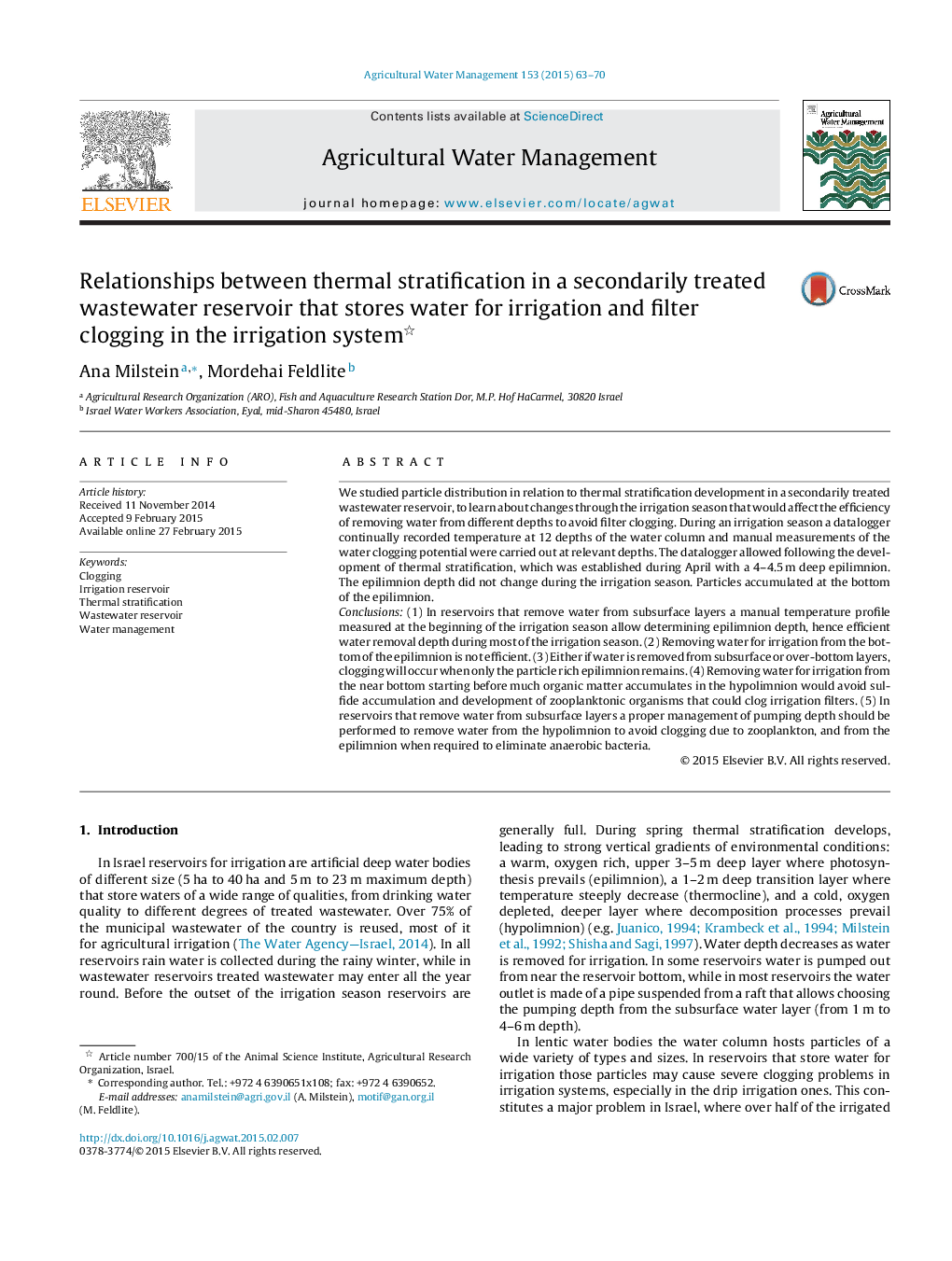| کد مقاله | کد نشریه | سال انتشار | مقاله انگلیسی | نسخه تمام متن |
|---|---|---|---|---|
| 4478454 | 1622926 | 2015 | 8 صفحه PDF | دانلود رایگان |
• We studied particle distribution in relation to thermal stratification in a reservoir.
• Temperature profile after stratification allows determining effective pumping depth.
• The basis of the epilimnion is rich in zooplankton and other clogging size particles.
• Water removal from hypolimnion avoids filter clogging due to zooplankton.
• Water removal from epilimnion avoids clogging due to flocks of anaerobic bacteria.
We studied particle distribution in relation to thermal stratification development in a secondarily treated wastewater reservoir, to learn about changes through the irrigation season that would affect the efficiency of removing water from different depths to avoid filter clogging. During an irrigation season a datalogger continually recorded temperature at 12 depths of the water column and manual measurements of the water clogging potential were carried out at relevant depths. The datalogger allowed following the development of thermal stratification, which was established during April with a 4–4.5 m deep epilimnion. The epilimnion depth did not change during the irrigation season. Particles accumulated at the bottom of the epilimnion.Conclusions(1) In reservoirs that remove water from subsurface layers a manual temperature profile measured at the beginning of the irrigation season allow determining epilimnion depth, hence efficient water removal depth during most of the irrigation season. (2) Removing water for irrigation from the bottom of the epilimnion is not efficient. (3) Either if water is removed from subsurface or over-bottom layers, clogging will occur when only the particle rich epilimnion remains. (4) Removing water for irrigation from the near bottom starting before much organic matter accumulates in the hypolimnion would avoid sulfide accumulation and development of zooplanktonic organisms that could clog irrigation filters. (5) In reservoirs that remove water from subsurface layers a proper management of pumping depth should be performed to remove water from the hypolimnion to avoid clogging due to zooplankton, and from the epilimnion when required to eliminate anaerobic bacteria.
Figure optionsDownload as PowerPoint slide
Journal: Agricultural Water Management - Volume 153, 1 May 2015, Pages 63–70
